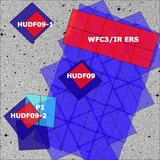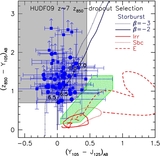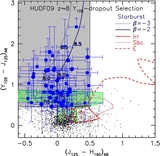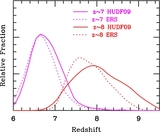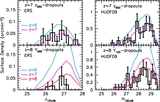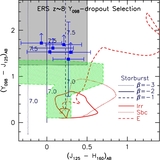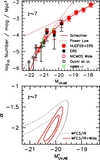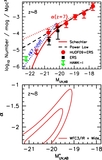Image Details

Caption: Figure 14.
Derived faint-end slope α to the UV LF vs. redshift. The present constraints on α are shown as the large solid red circles, with the 1σ uncertainties plotted as the error bars. The values of α derived at z ~ 4–6 (Bouwens et al. 2007; but see also Yoshida et al. 2006; McLure et al. 2009) are plotted as the open red circles. Other determinations are from Oesch et al. (2010a, blue circles; see also Hathi et al. 2010), Reddy & Steidel (2009, green squares), Arnouts et al. (2005, blue crosses), Wyder et al. (2005, blue squares), Treyer et al. (1998, black open circle), and Oesch et al. (2007, 2010a, green crosses). While the current constraints on the faint-end slope α at z ~ 7 and z ~ 8 are of limited statistical weight (see also Ouchi et al. 2009; Oesch et al. 2010a), they suggest the faint-end slope α is at least as steep as −1.7—and possibly as steep as ~ − 2.0 (Sections 5.2 and 5.3). We remark that the derived slopes simply describe the shape of the LF to several magnitudes below L*. Thus, slopes that are even steeper than −2 do not imply a divergent luminosity density (since the LF will cut off at some faint value).
Copyright and Terms & Conditions
© 2011. The American Astronomical Society. All rights reserved.


